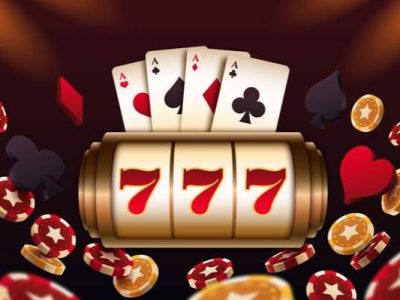Multiple bonus features triggering simultaneously present technical and design challenges that slot developers resolve through various priority systems. Online slot games employ sequential processing, feature stacking mechanics, queuing protocols, and hierarchical activation rules when multiple bonuses become active on a single spin. Gempak99 slot structure enables flexible feature activation that adapts to different gameplay styles. These handling methods dramatically affect gameplay flow, winning potential, and the overall entertainment experience when rare multi-bonus scenarios occur.
Sequential activation protocols
Multiple triggered bonuses are usually processed one at a time. Free spins and pick-and-click bonuses activate when the same spin is activated twice. This sequential approach prevents visual confusion and technical complications from running multiple game states concurrently. The activation order typically follows programmed priority hierarchies. Free spin features commonly take precedence over instant-win bonuses. Jackpot triggers interrupt everything else, regardless of what was activated first. Progressive features override standard bonuses. These priority rules ensure the most valuable or time-sensitive features get processed appropriately. Players experience one bonus completion celebration before transitioning into the next triggered feature, maintaining clear narrative flow throughout compound bonus scenarios.
Feature stacking systems
Advanced slot designs allow certain bonuses to stack, applying multiple enhancements simultaneously rather than sequentially. A spin might trigger expanding wilds and multipliers together, with both features active during the same game round. These stacked bonuses compound their effects, creating win potential exceeding what either feature produces individually. Stacking mechanics work when features enhance rather than replace base gameplay. Multipliers can stack with extra wilds since both modify the same underlying spin result. However, features that fundamentally alter game states, like switching to different reel sets, cannot stack logically. Developers carefully design which features can coexist and which require sequential handling based on technical compatibility and gameplay coherence.
Bonus queue management
When multiple bonuses trigger, games place them in activation queues, determining the order and timing of feature delivery. Queue management becomes crucial during complex triggering scenarios like landing bonus symbols while already inside a bonus round. The system must track which features await activation and present them smoothly without technical glitches or player confusion. Queue systems handle various scenarios:
- Bonuses triggered during free spins get queued until the current feature concludes
- Retriggered features add to existing bonus totals or queue separately based on game design
- Jackpot wins interrupt queues and are processed immediately, regardless of position
- Some games display pending bonuses through interface indicators showing what’s queued
Transparent queue communication helps players track what’s coming and maintains anticipation across extended multi-bonus sequences.
Hierarchical trigger resolution
Games establish clear hierarchies, determining which feature takes precedence during simultaneous activation. This prevents ambiguity about what happens when multiple bonus conditions get met on identical spins. Multi-trigger scenarios are handled consistently by the hierarchy. Major bonus rounds are usually placed first, followed by minor features, and finally base game enhancements. Within each tier, specific rules govern priority. Games may prioritize bonus rounds based on symbol type, reel position, or simply left-to-right reel order between two equal bonus rounds. These detailed resolution rules eliminate randomness from how concurrent triggers get processed.
Compound bonus mathematics
Concurrent activations require special mathematical treatment, ensuring the combined features produce fair outcomes within the designed RTP parameters. When bonuses stack or queue, the total value must align with probability models. Developers account for concurrent trigger likelihood when programming individual feature values and frequencies. The math becomes particularly complex with retriggerable features that cascade into extended bonus sequences. Each potential retrigger during active bonuses adds calculation layers, ensuring the compounding possibilities remain balanced. Testing validates that even rare multi-bonus scenarios produce outcomes consistent with published game mathematics.







Comments